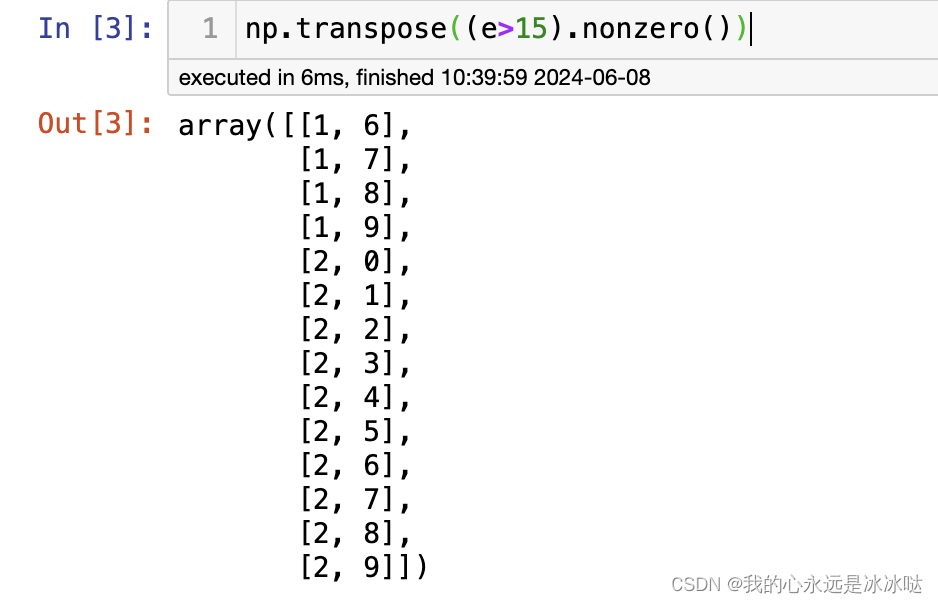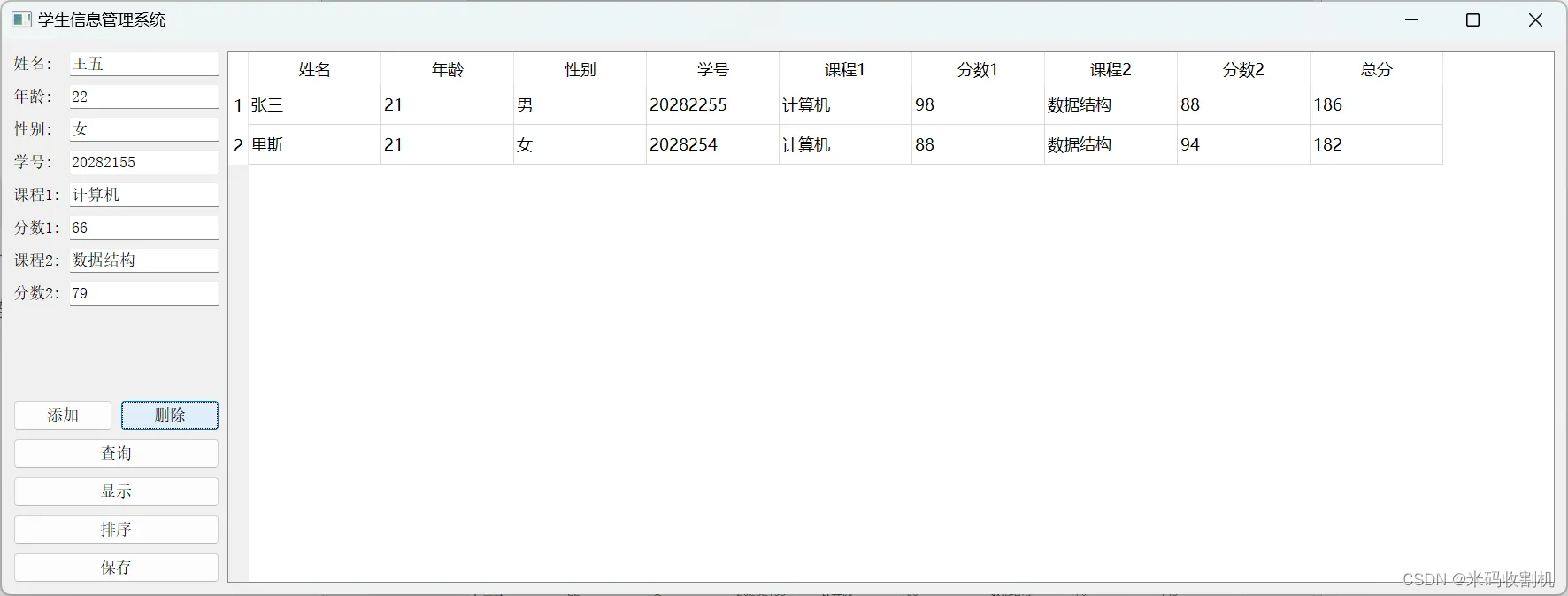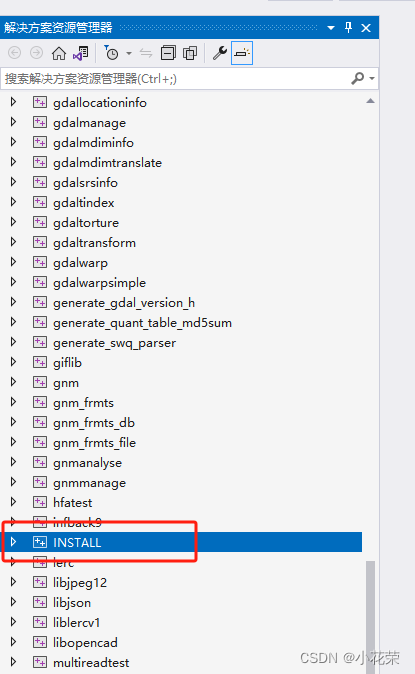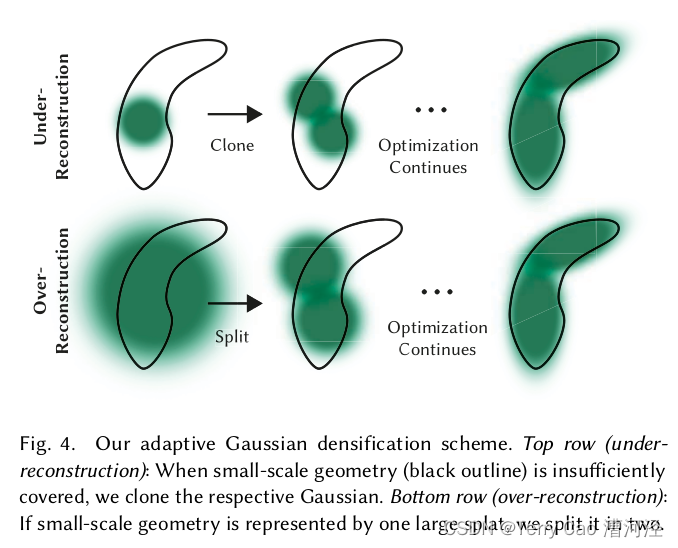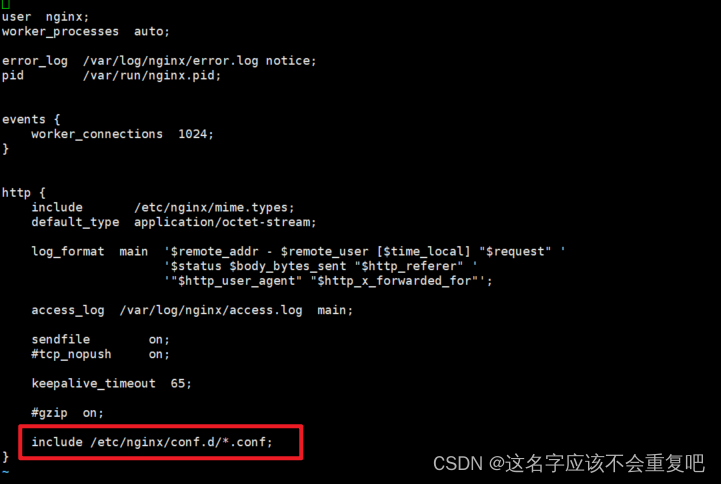文章目录
- 1.三种配置文件
- 2. yaml语法
- 2.1 yaml语法规则
- 2.2 yaml数组数据
- 2.3 yaml数据读取
- 3. 多环境开发配置
- 3.1 多环境启动配置
- 3.2 多环境启动命令格式
- 3.3 多环境开发控制
- 4. 配置文件分类
1.三种配置文件
问题导入
框架常见的配置文件有哪几种形式?
比如:
jdbc.properties
spring.properties
如果每个技术或者框架都要这么写一个配置文件是不是过于繁琐?
SpringBoot就给我们整合到了一个配置文件,下面就是这个配置文件的三种形式
SpringBoot提供了多种属性配置方式
- application.properties
server.port=80
- application.yml
server:
port: 81
- application.yaml
server:
port: 82

SpringBoot配置文件加载顺序(了解)
- application.properties > application.yml > application.yaml
注意事项:
- SpringBoot核心配置文件名为application
- SpringBoot内置属性过多,且所有属性集中在一起修改,在使用时,通过提示键+关键字修改属性
2. yaml语法
什么是yaml,和properties有什么区别?
properties文件我们是很熟悉的!
- YAML(YAML Ain’t Markup Language),一种数据序列化格式
- 优点:
- 容易阅读
- 容易与脚本语言交互
- 以数据为核心,重数据轻格式
- YAML文件扩展名
- .yml(主流)
- .yaml
2.1 yaml语法规则
- 大小写敏感
- 属性层级关系使用多行描述,每行结尾使用冒号结束
- 使用缩进表示层级关系,同层级左侧对齐,只允许使用空格(不允许使用Tab键)
- 属性值前面添加空格(属性名与属性值之间使用冒号+空格作为分隔)
- #表示注释
- 核心规则:数据前面要加空格与冒号隔开
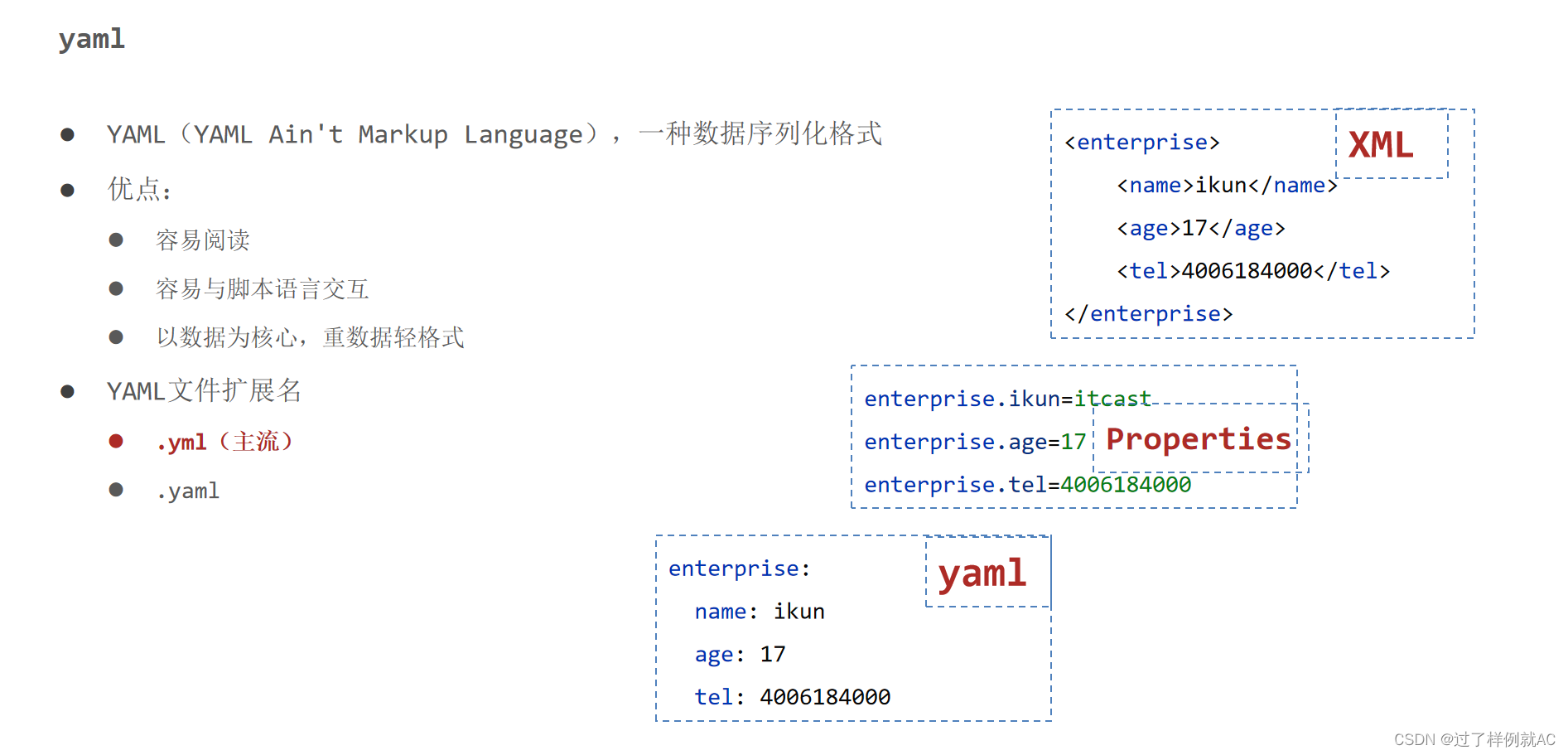
2.2 yaml数组数据
- 数组数据在数据书写位置的下方使用减号作为数据开始符号,每行书写一个数据,减号与数据间空格分隔
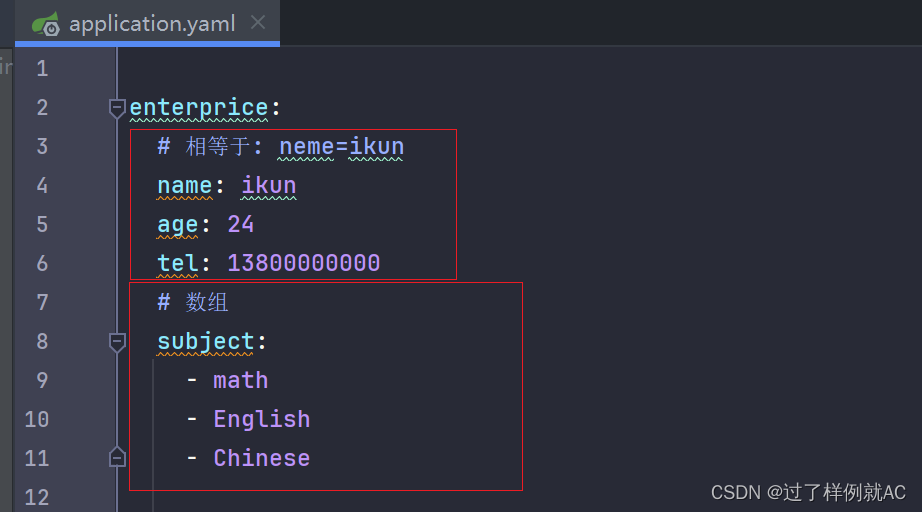
2.3 yaml数据读取
-
- 使用@Value读取单个数据,属性名引用方式:${一级属性名.二级属性名……}
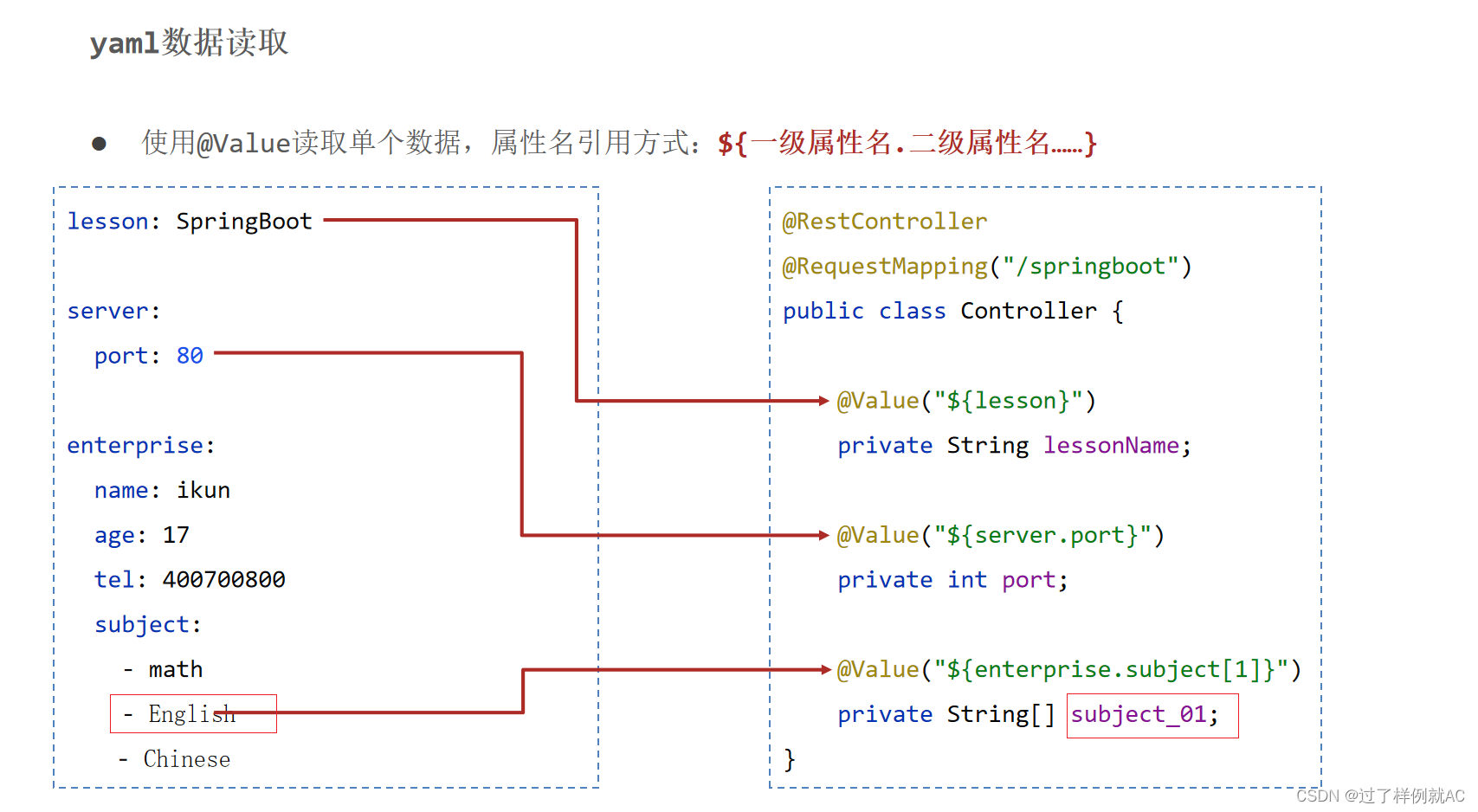
- 封装全部数据到Environment对象
spring给我提供了一个Environment类,可以用来获取值
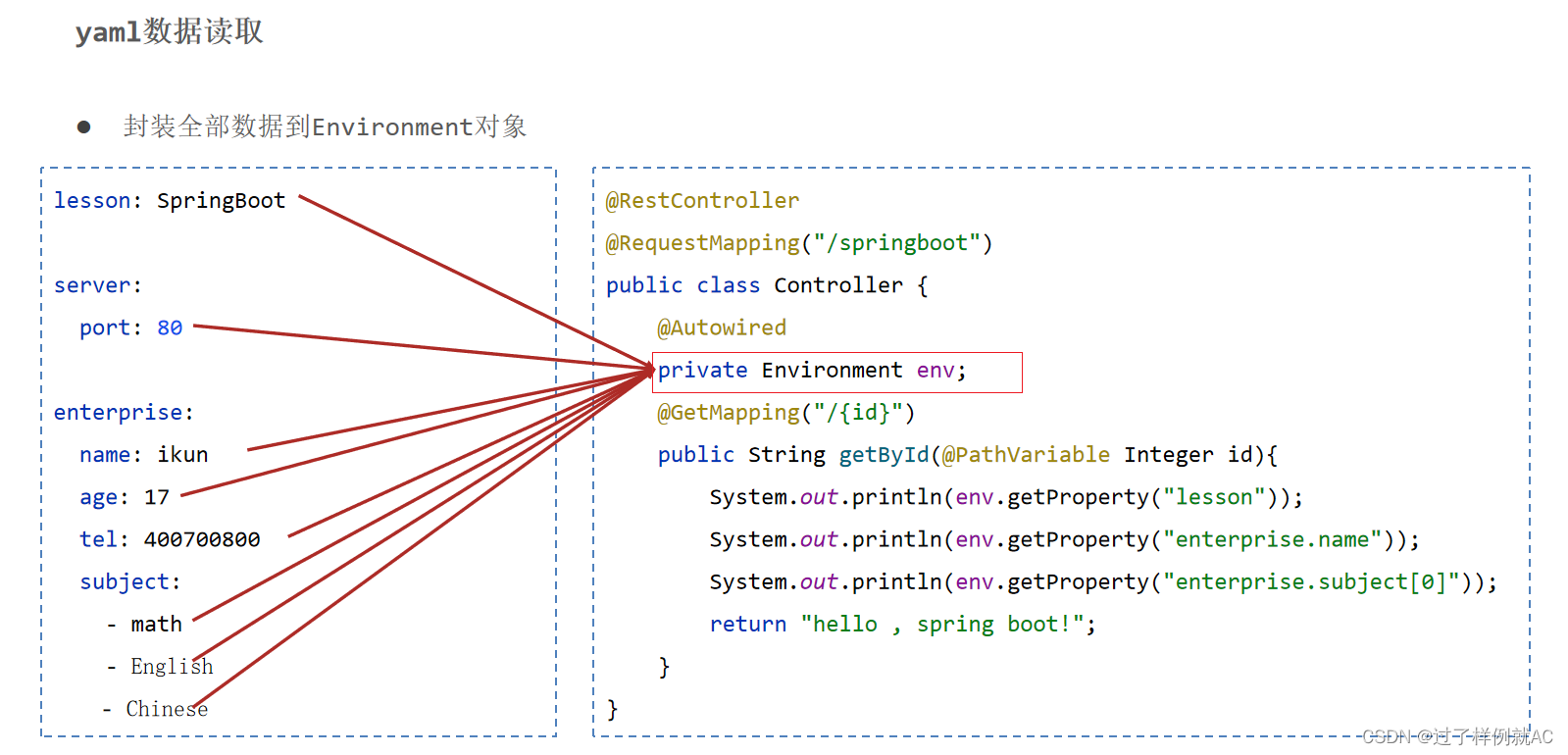 - 自定义对象封装指定数据【重点】(常用)
- 自定义对象封装指定数据【重点】(常用)
public class Enterprise {
private String name;
private Integer age;
private String tel;
private String[] subject;
//自行添加getter、setter、toString()等方法
}
prefix = “enterprise” 表示在application.yml文件中找以enterprise为开头的来进行封装到我们自定的类
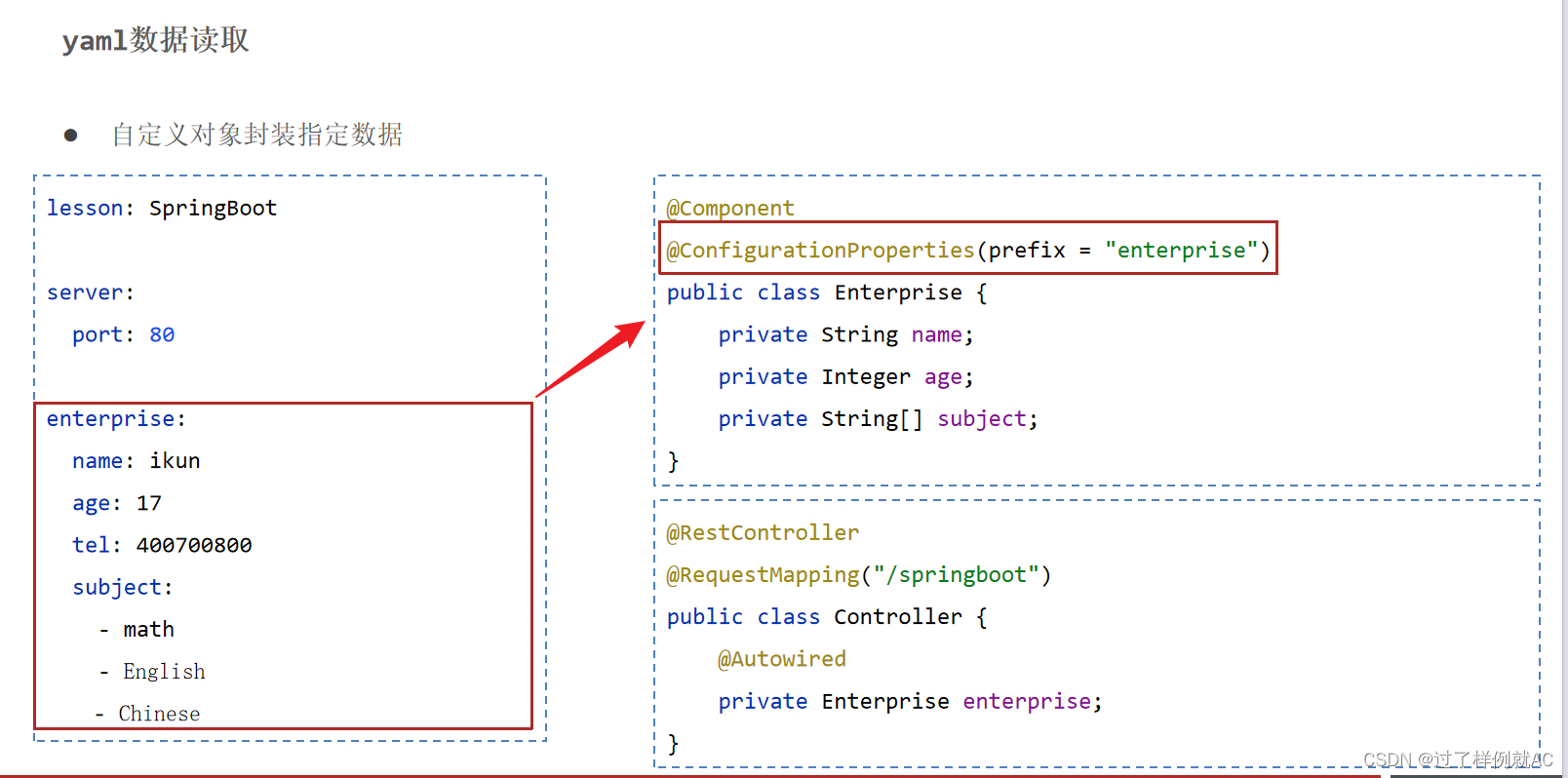
- 自定义对象封装数据警告解决方案

导入相关依赖就行
<dependency>
<groupId>org.springframework.boot</groupId>
<artifactId>spring-boot-configuration-processor</artifactId>
<optional>true</optional>
</dependency>
3. 多环境开发配置
在实际开发中,项目的开发环境、测试环境、生产环境的配置信息是否会一致?如何快速切换?
3.1 多环境启动配置
- yaml文件多环境启动
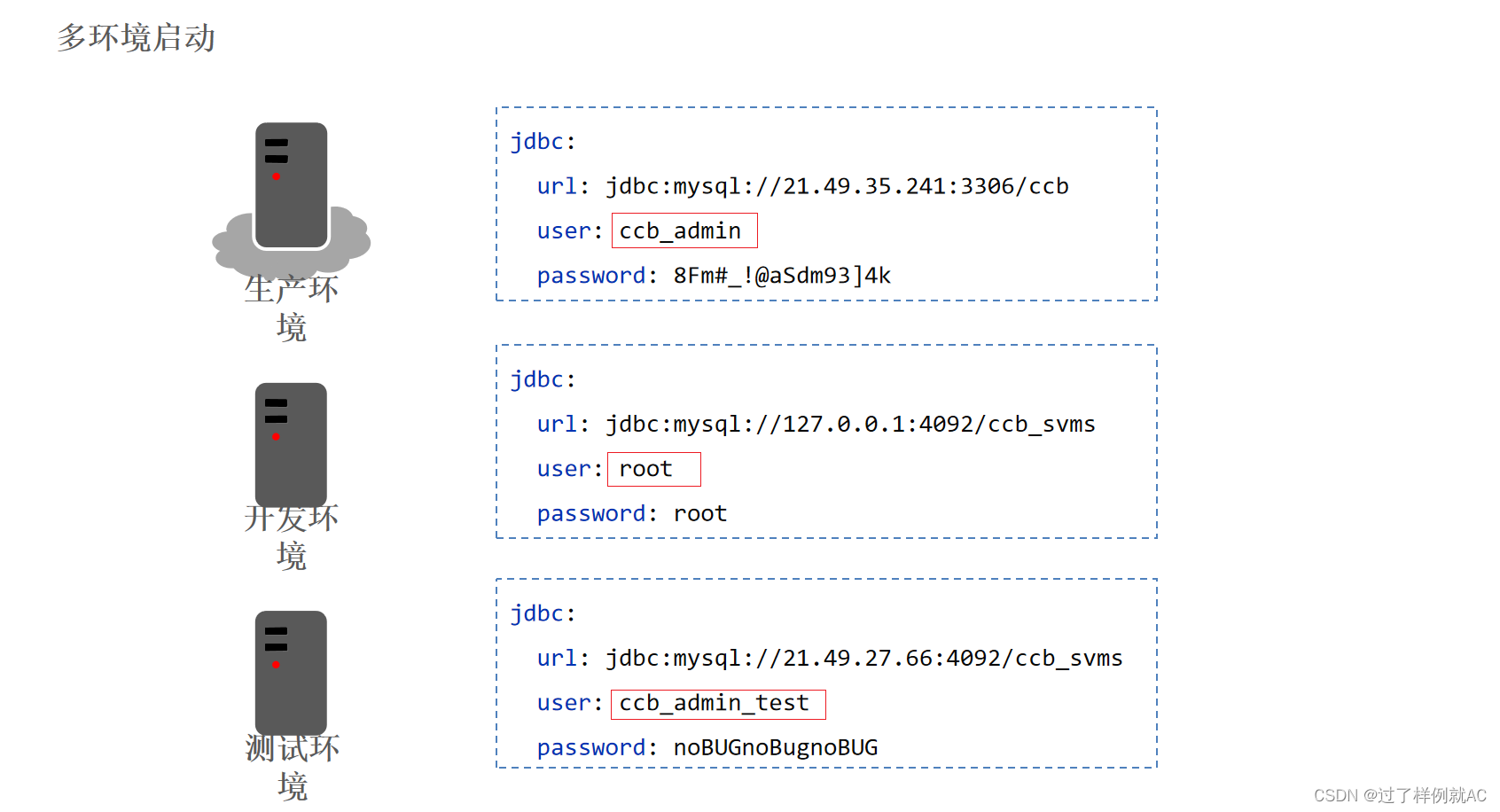
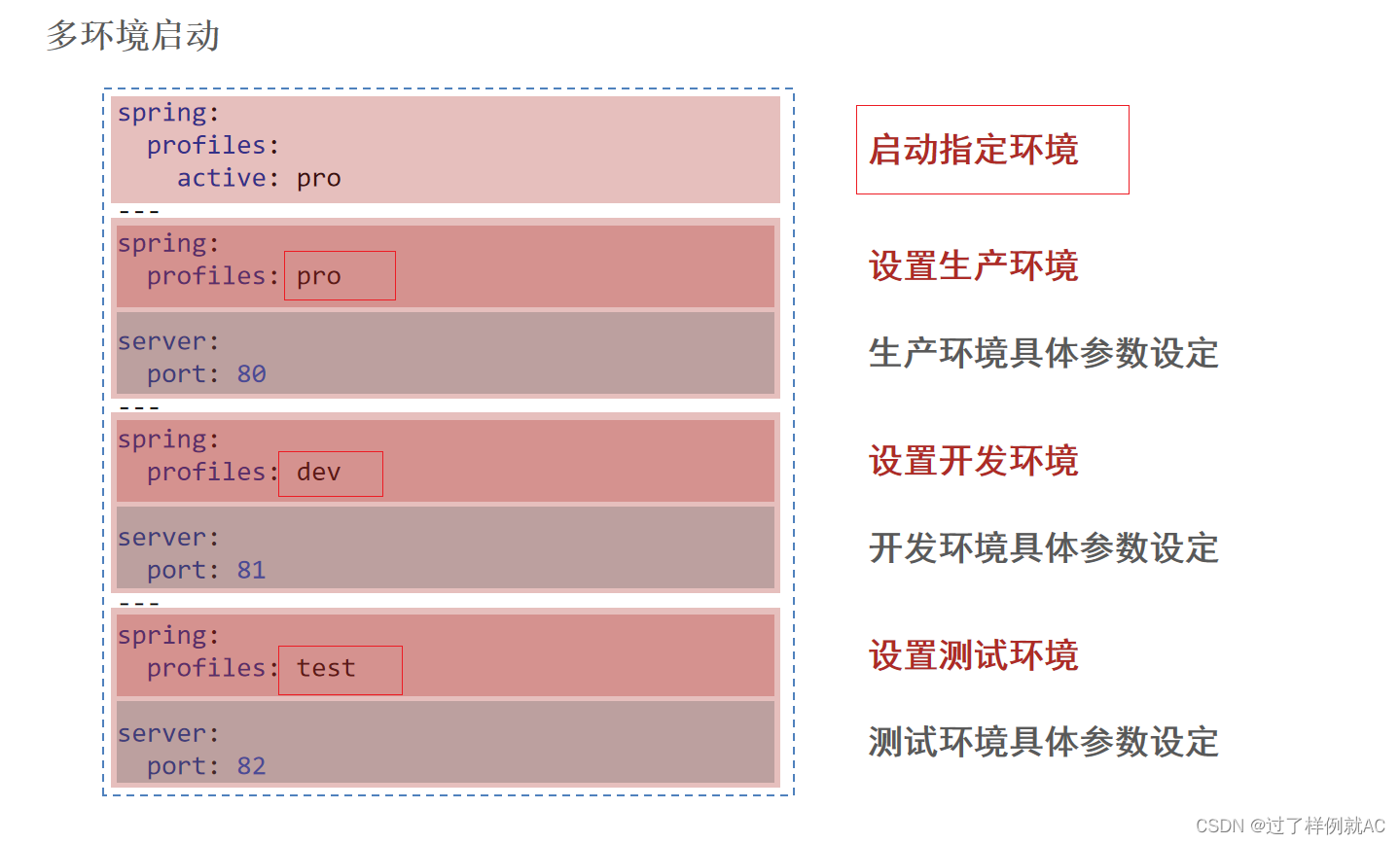
推荐右边的启动格式
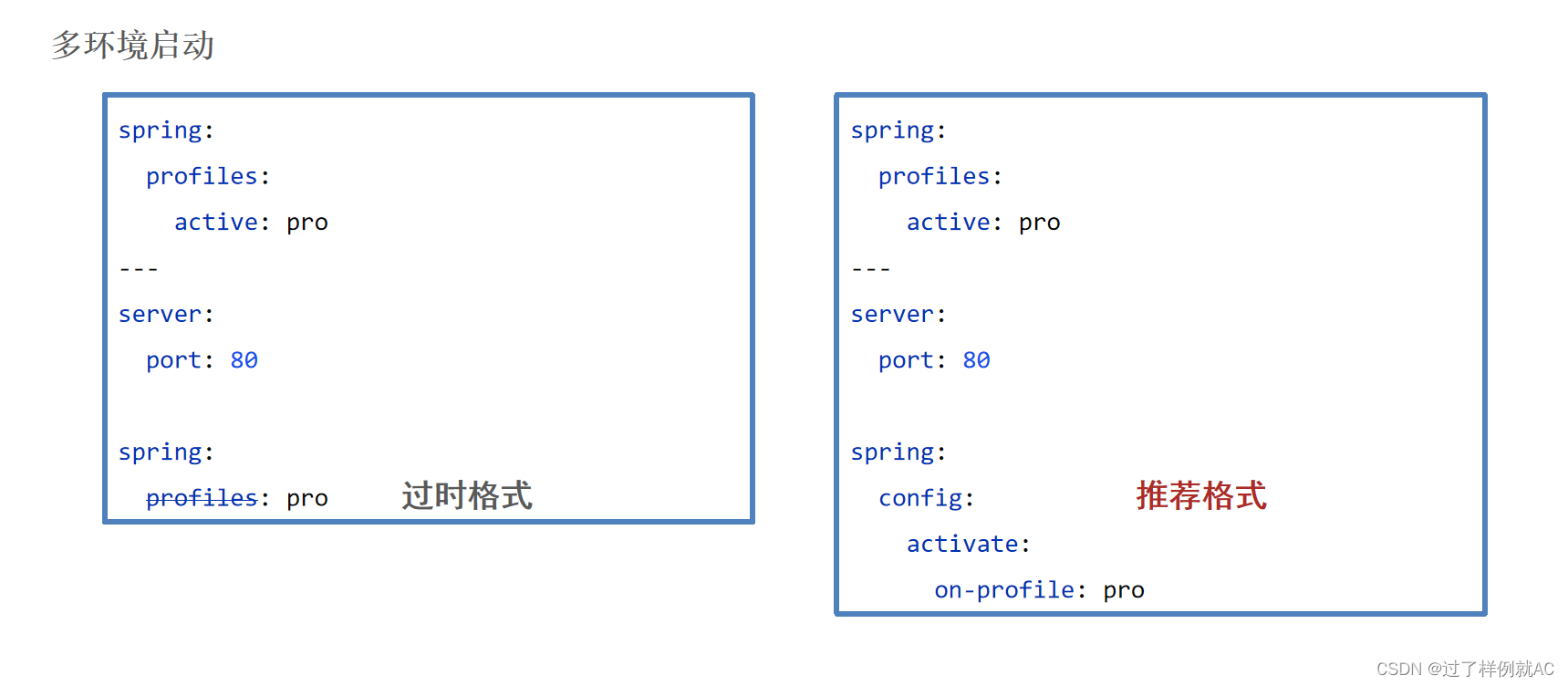
- properties文件多环境启动
创建3个properties文件,使用那个开发环境,就使用对应的开发环境
#主启动配置文件 application.properties
spring.profiles.active=pro
#环境分类配置文件 application-pro.properties
server.port=80
#环境分类配置文件 application-dev.properties
server.port=81
#环境分类配置文件application-test.properties
server.port=82
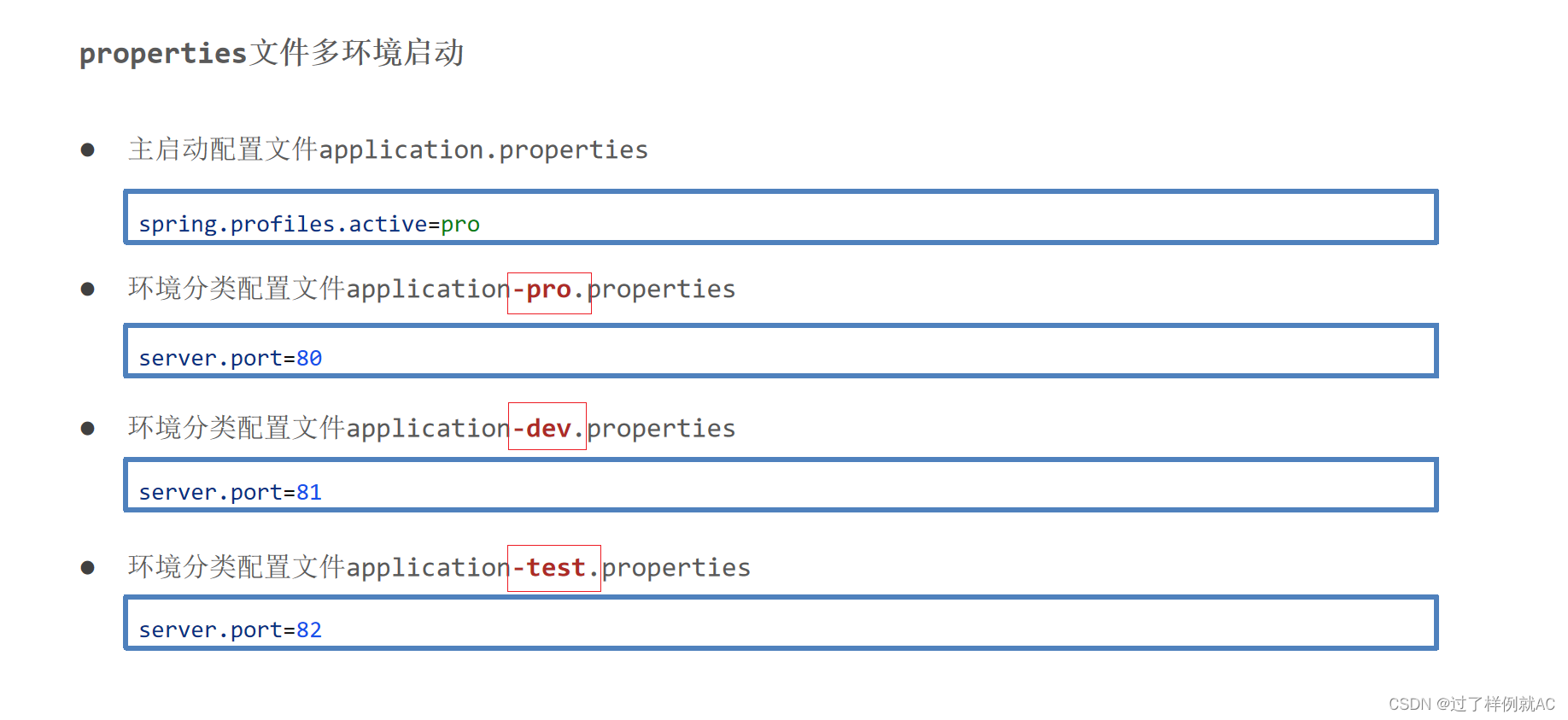
3.2 多环境启动命令格式
- 带参数启动SpringBoot
java –jar springboot.jar --spring.profiles.active=test
java –jar springboot.jar --server.port=88
java –jar springboot.jar --server.port=88 --spring.profiles.active=test
参数加载优先顺序
- 参看文档:https://docs.spring.io/spring-boot/docs/current/reference/html/spring-boot-features.html#boot-features-external-config
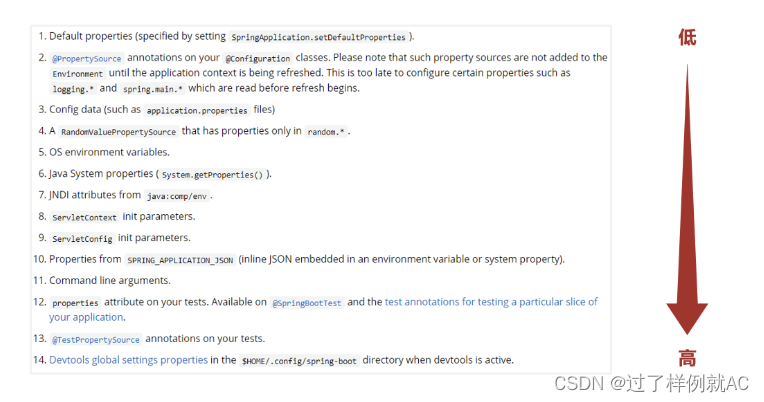
3.3 多环境开发控制
Maven与SpringBoot多环境兼容(步骤)
①:Maven中设置多环境属性
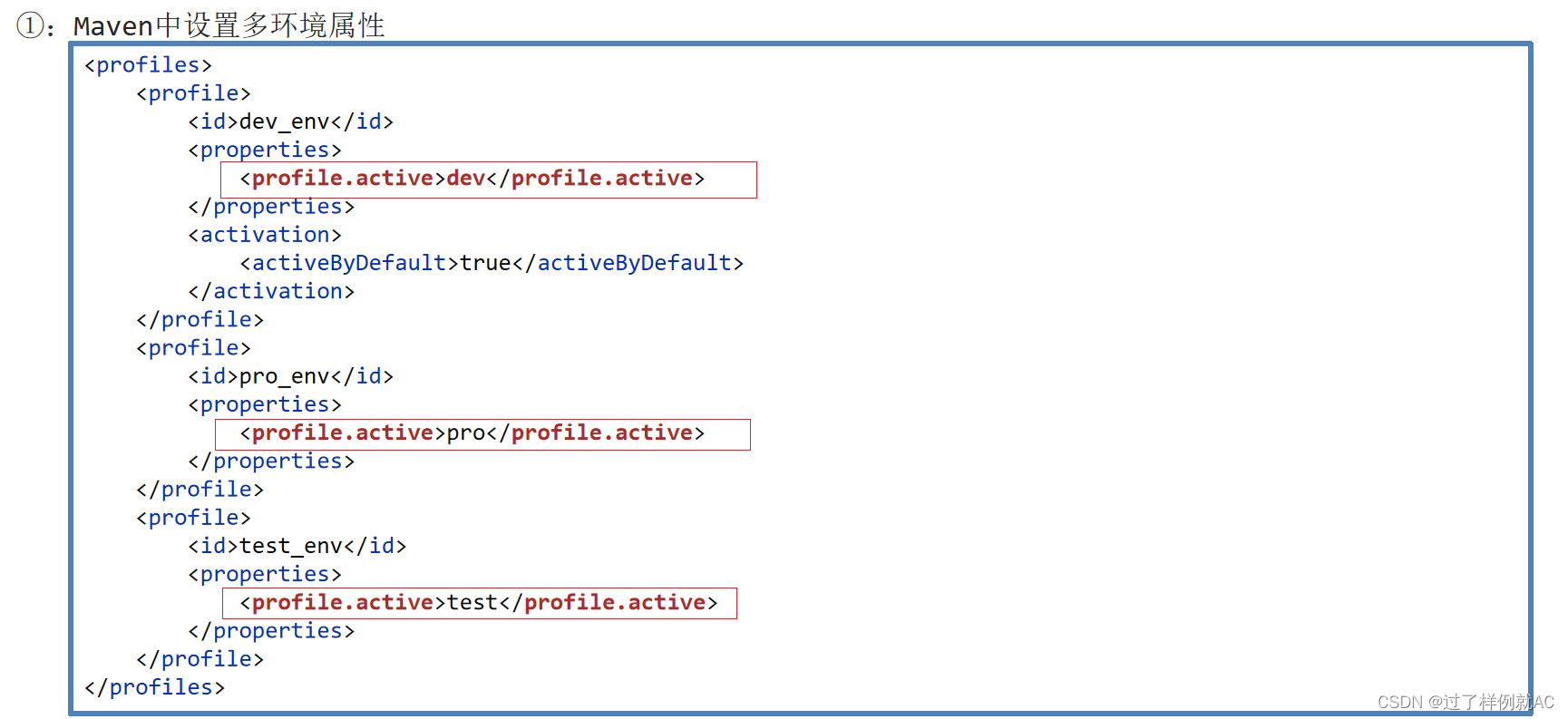
<profiles>
<profile>
<id>dev_env</id>
<properties>
<profile.active>dev</profile.active>
</properties>
<activation>
<activeByDefault>true</activeByDefault>
</activation>
</profile>
<profile>
<id>pro_env</id>
<properties>
<profile.active>pro</profile.active>
</properties>
</profile>
<profile>
<id>test_env</id>
<properties>
<profile.active>test</profile.active>
</properties>
</profile>
</profiles>
②:SpringBoot中引用Maven属性
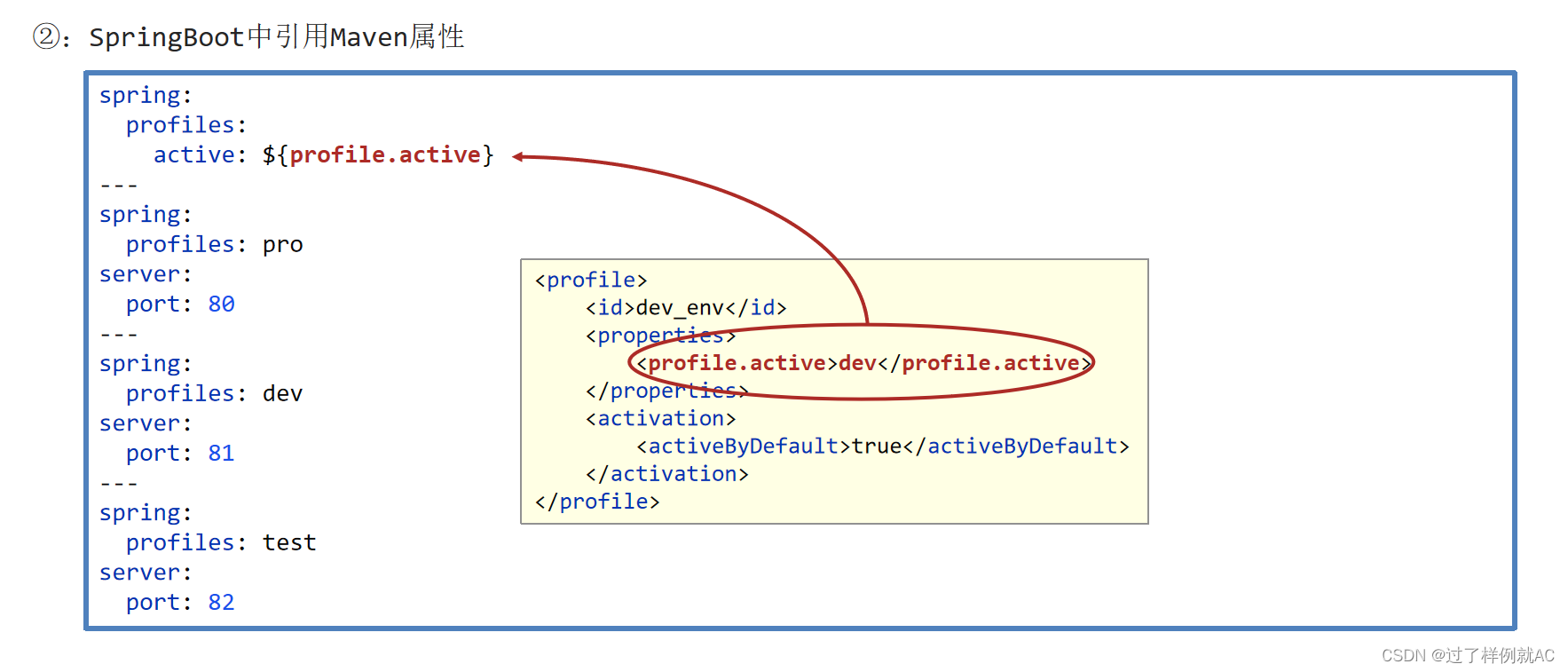
③:执行Maven打包指令
-
Maven指令执行完毕后,生成了对应的包,其中类参与编译,但是配置文件并没有编译,而是复制到包中

-
解决思路:对于源码中非java类的操作要求加载Maven对应的属性,解析${}占位符
④:对资源文件开启对默认占位符的解析
<build>
<plugins>
<plugin>
<artifactId>maven-resources-plugin</artifactId>
<configuration>
<encoding>utf-8</encoding>
<useDefaultDelimiters>true</useDefaultDelimiters>
</configuration>
</plugin>
</plugins>
</build>
- Maven打包加载到属性,打包顺利通过

4. 配置文件分类
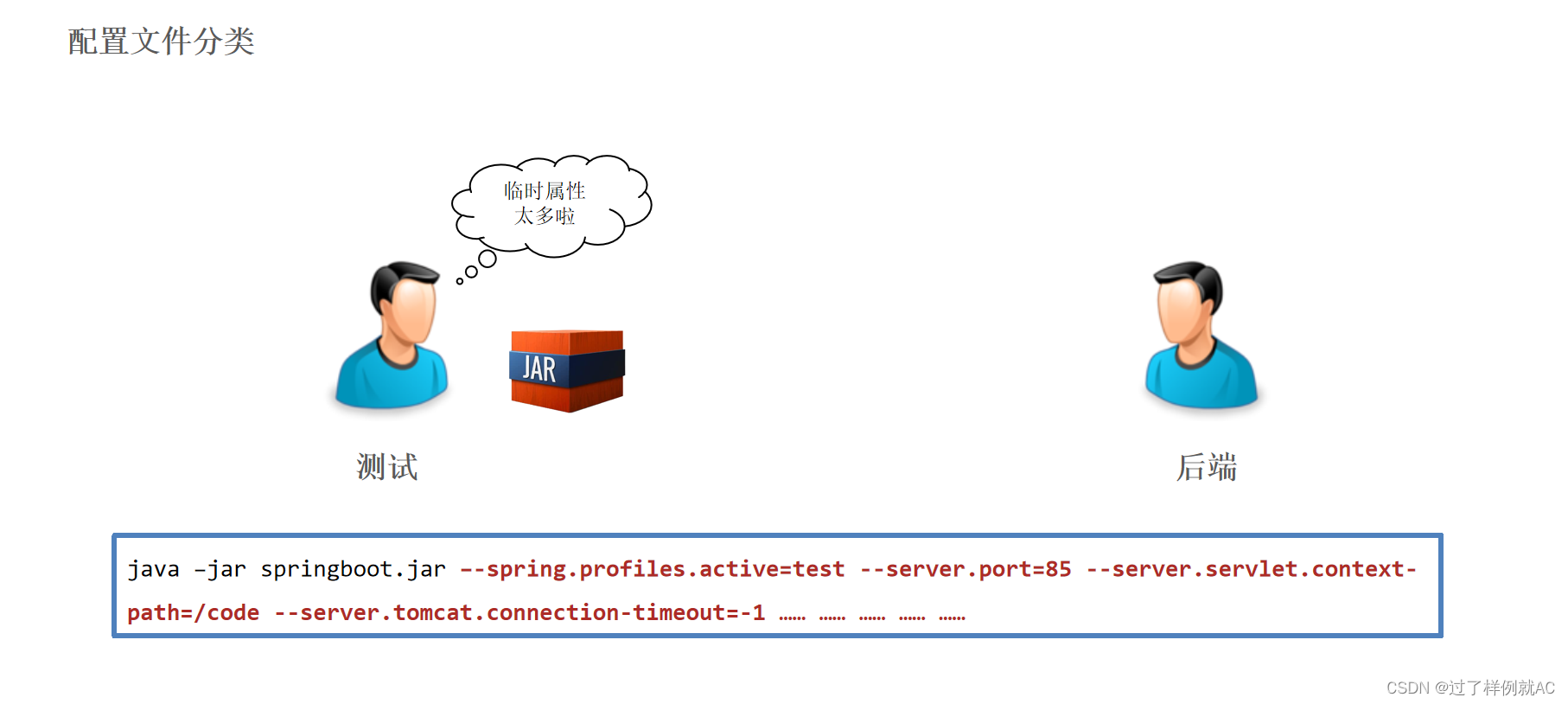
java –jar springboot.jar --spring.profiles.active=test --server.port=85 --server.servlet.context-path=/code --server.tomcat.connection-timeout=-1
-
SpringBoot中4级配置文件
1级: file :config/application.yml 【最高】
2级: file :application.yml
3级:classpath:config/application.yml
4级:classpath:application.yml 【最低】
-
作用:
1级与2级留做系统打包后设置通用属性
3级与4级用于系统开发阶段设置通用属性

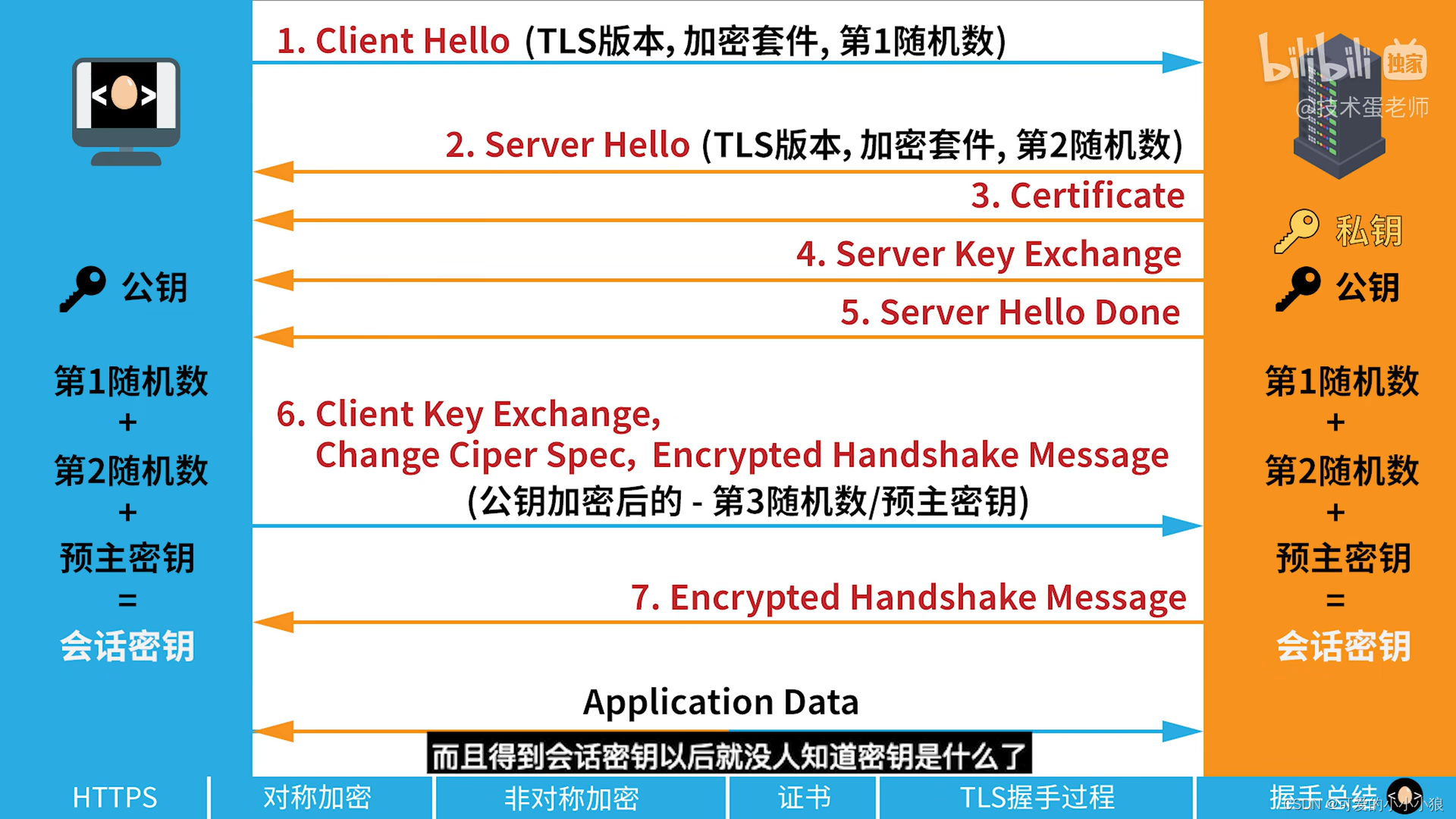



![[stm32]——uc/OS-III多任务程序](https://img-blog.csdnimg.cn/direct/e3b53b25b0874604a86538b0bbc80e7a.png)




